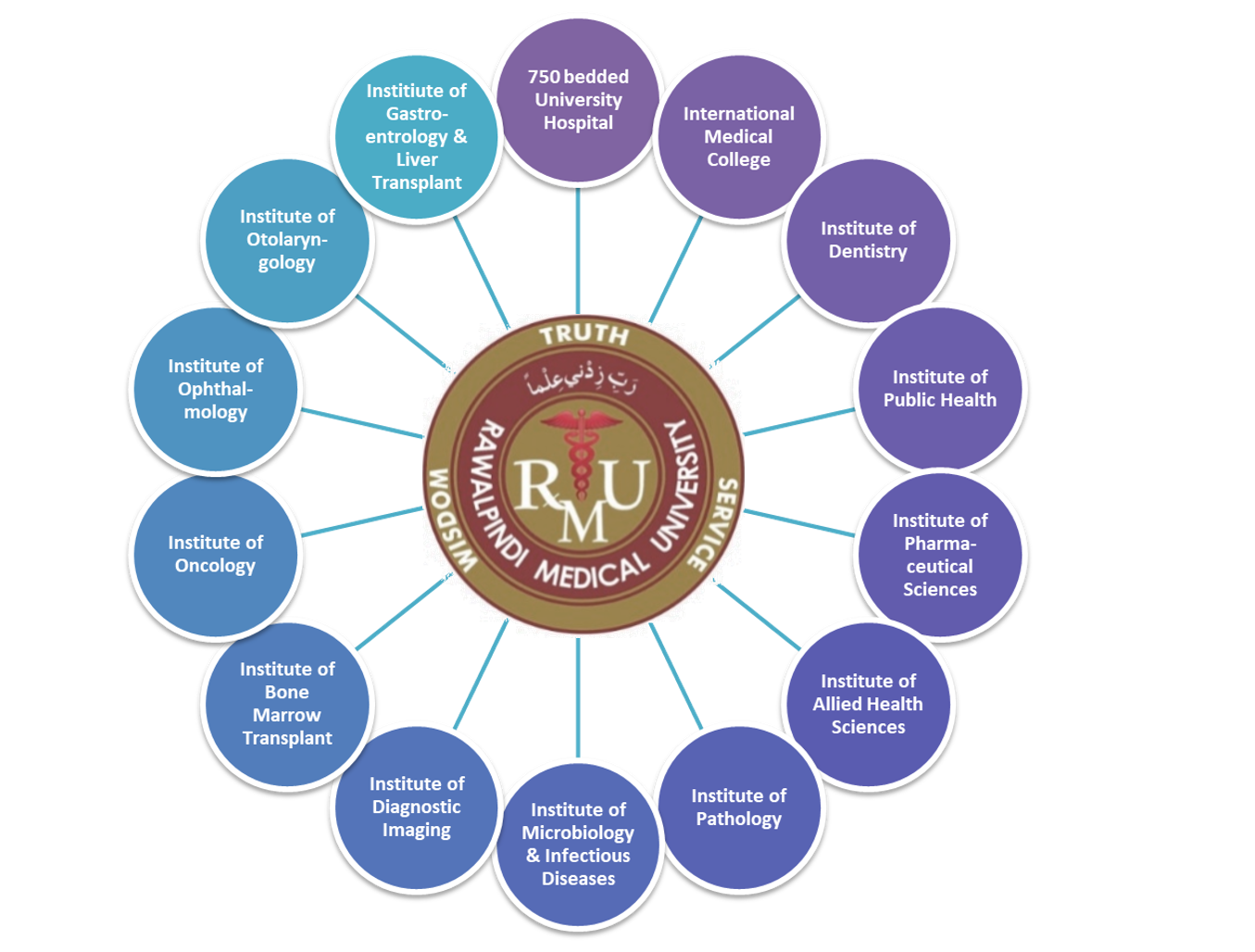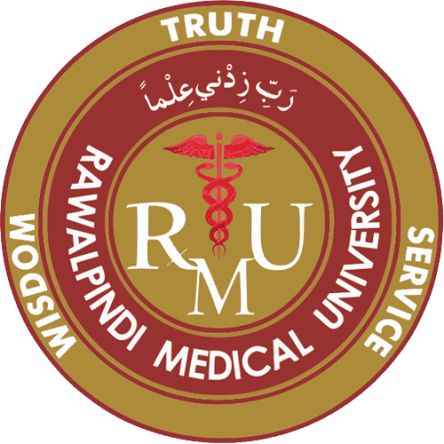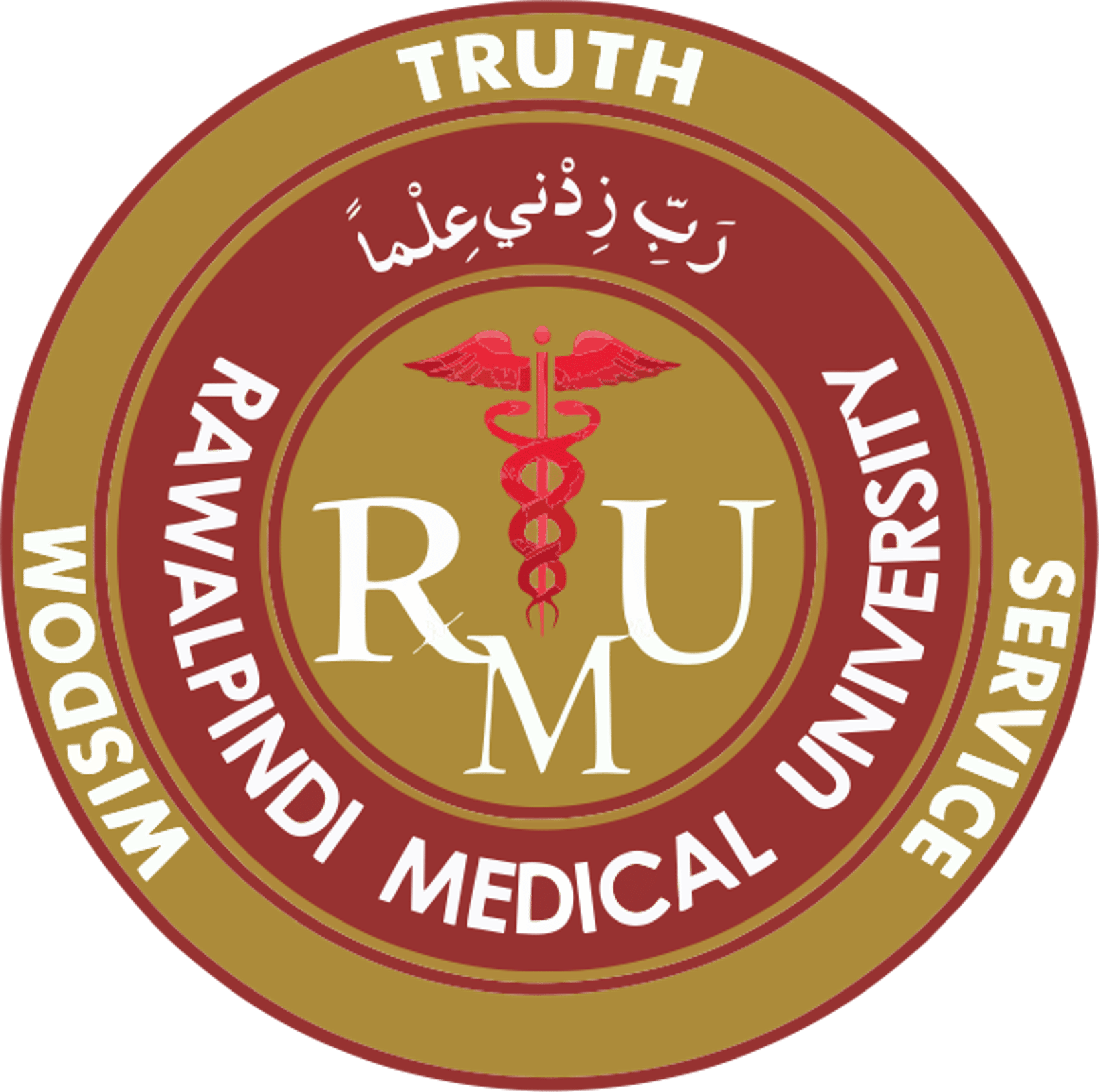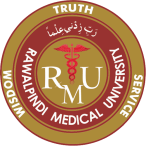
Infrastructure Development
Infrastructure & Human Resource Development
One of the important challenges faced with the up-gradation of the Rawalpindi Medical College to the status of the university was the unavailability of the basic infrastructure required for the university including a separate university secretariat hosting the important components of the university life VC office, Registrar office, Examination cell, etc. Ensuring their availability was one of the primary requirements of the Higher Education Commission of Pakistan as per the guidelines published for the recognition of a university. Apart from the development of the basic university infrastructure, we were also required to revamp our human resources to fulfill the new responsibilities as well gear up for future challenges, including ever-increasing patient load in our attached tertiary care teaching hospitals. To meet the requirements of the regulatory bodies and our unshakeable commitment towards patient care required us to take immediate actions on was footings to build the required infrastructure and upgrade the human resource pool.
RMU Development Roadmap
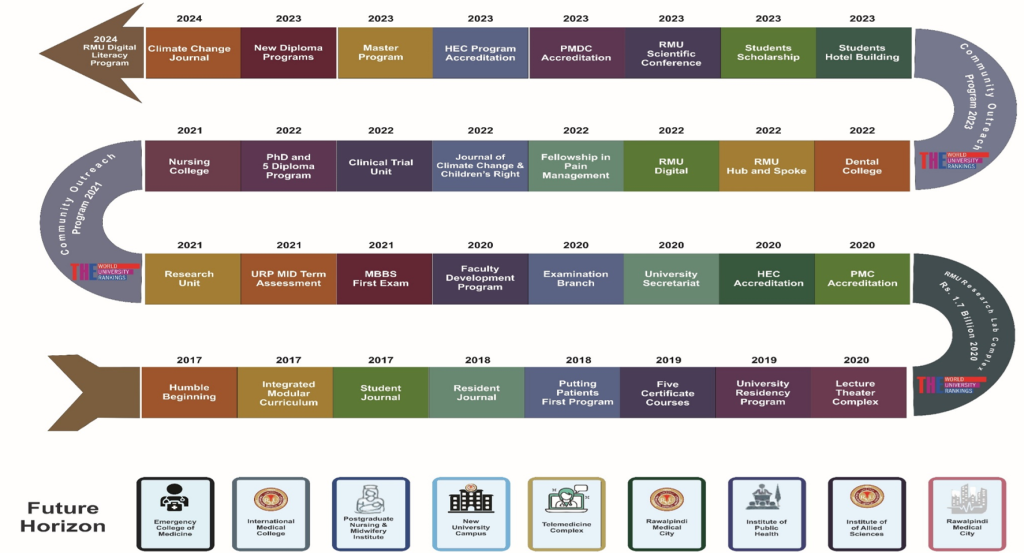
Research Lab Complex Concept to Reality
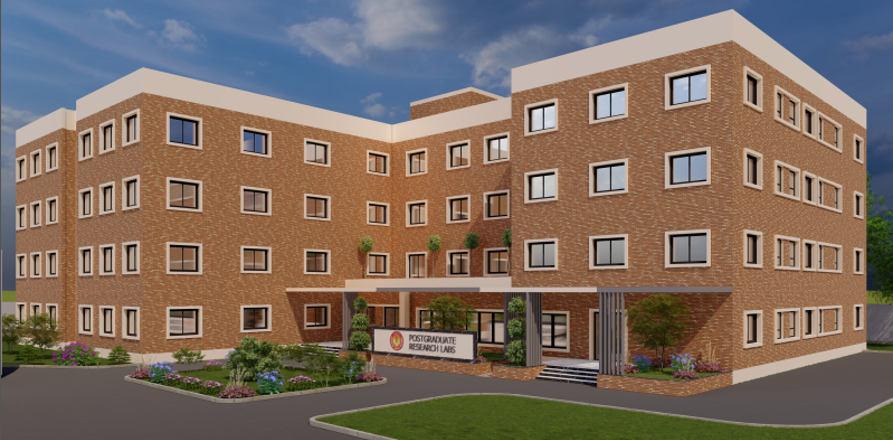
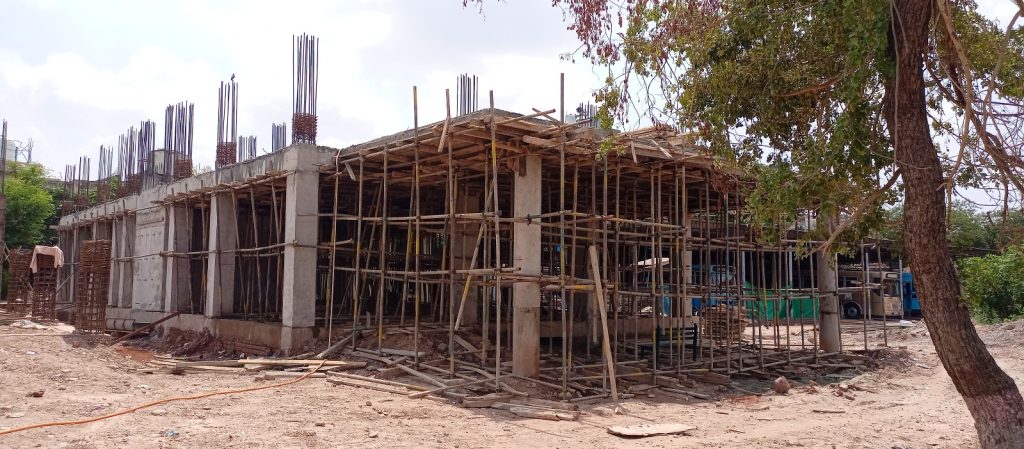
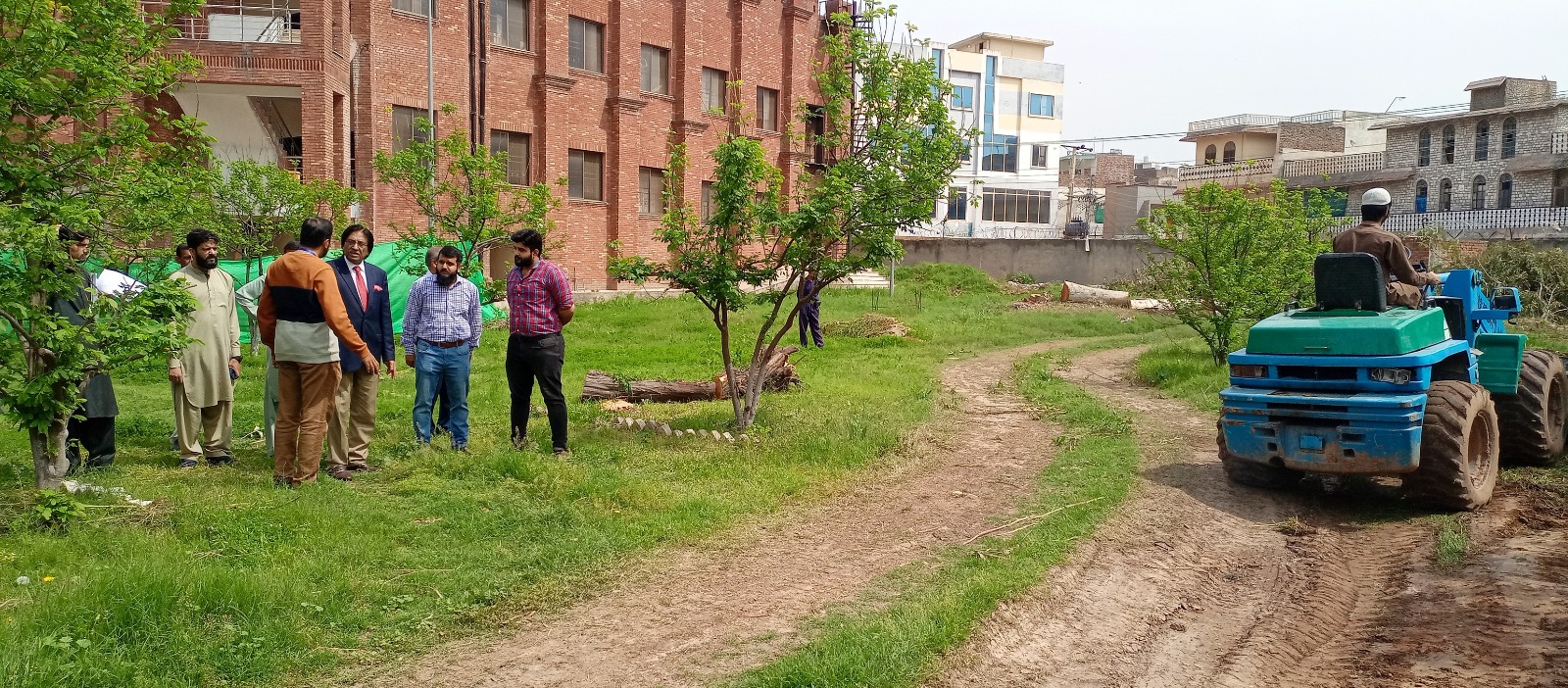
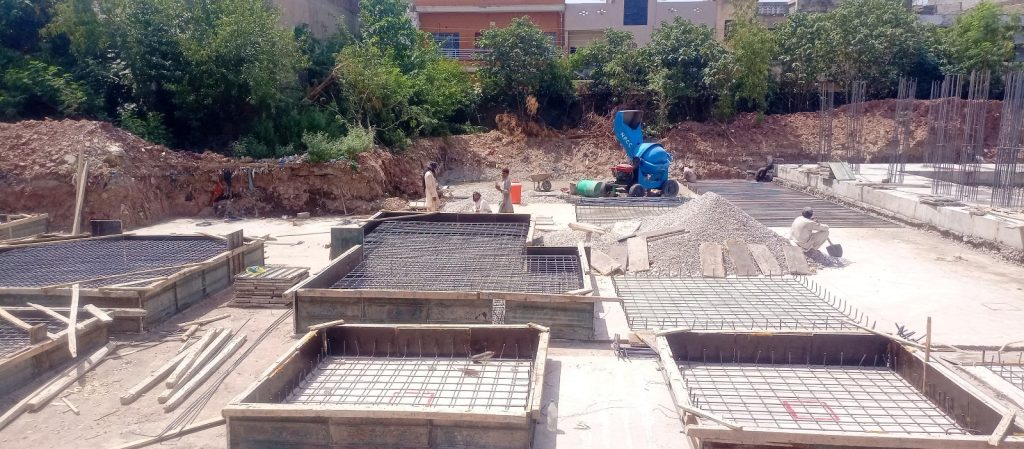
RMU Secretariat
- Office of the Vice Chancellor
- Syndicate Hall
- Deans Meeting Room
- Department of Information Technology
- Department of Examination
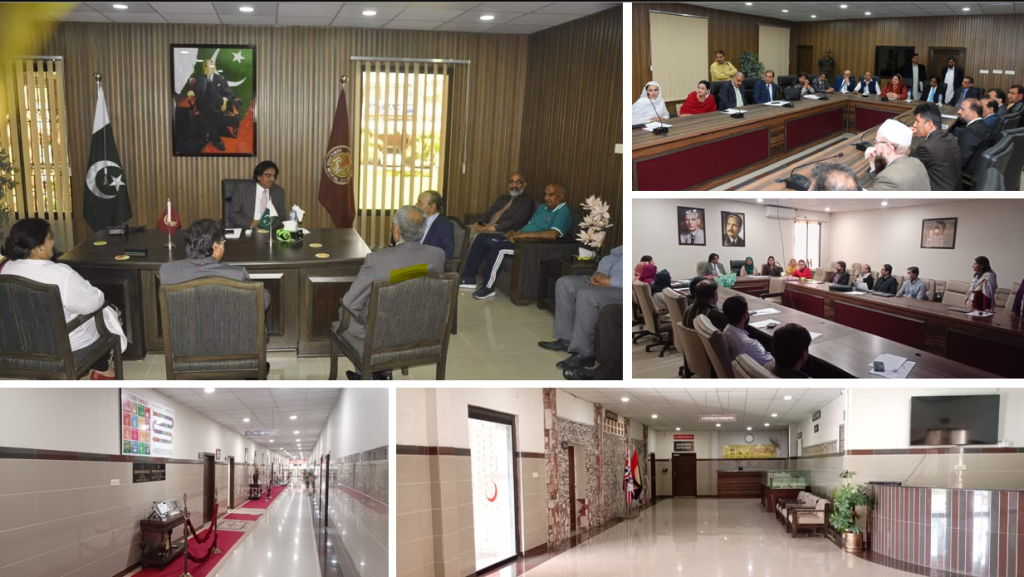
Horticultural Development Work
Rawalpindi Medical University Campus has created a beautiful and healthy environment. The campus now boasts very beautiful lawns and flower beds which are regularly maintained and offer a very pleasant sight for all visitors and students.
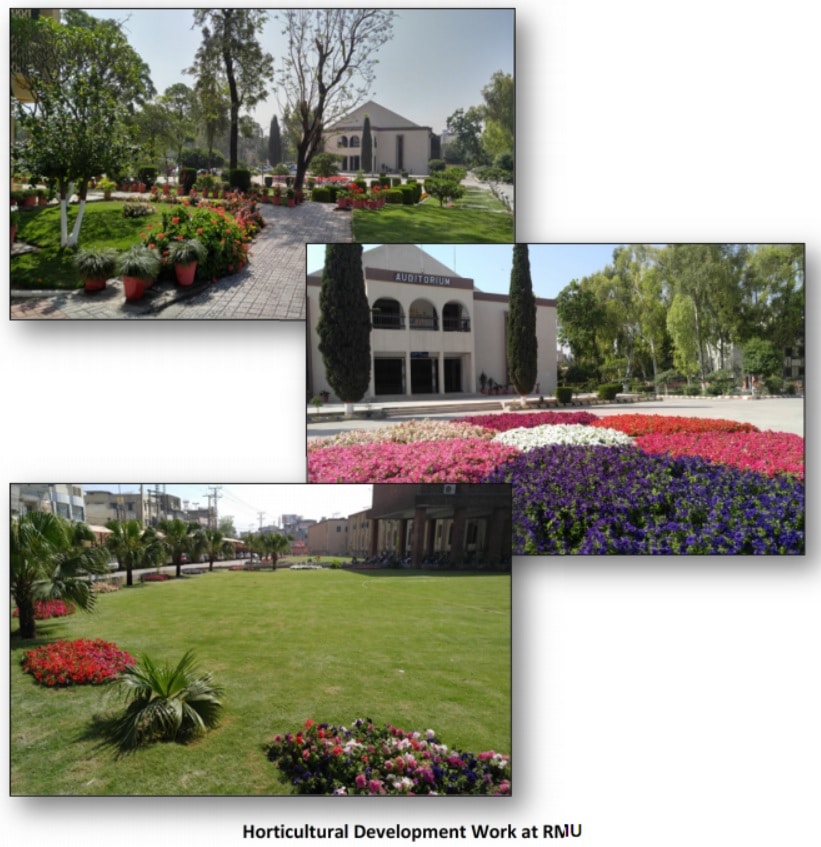

Climate Change
- Solarization
- Rainwater Harvesting System
- Tree, Plants
- Electric Sensor Lights
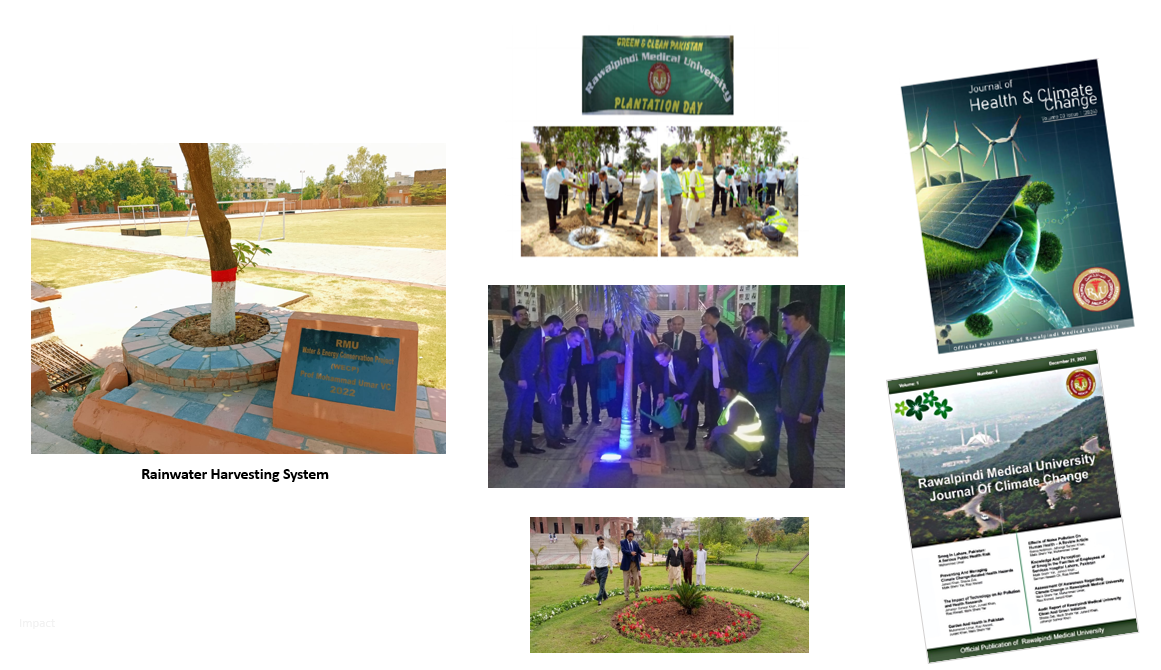

Digital Infrastructure
The imperative for digital infrastructure development within a medical university is paramount in the on temporary landscape of healthcare education. The integration of robust digital technologies is essential to enhance the efficiency, accessibility, and quality of medical education and research. Digital platforms facilitate innovative teaching methodologies, such as virtual simulations, online lectures, and collaborative learning environments, ensuring that students are exposed to cuttingedge practices. Furthermore, a well-developed digital infrastructure enables seamless communication among faculty, researchers, and students, fostering a dynamic exchange of ideas and knowledge. In the realm of healthcare research, digital infrastructure supports data management, analysis, and sharing, accelerating advancements in medical science. As the healthcare industry undergoes rapid technological transformations, a digitally empowered medical university is better positioned to produce graduates who are adept at navigating the evolving landscape of medicine and contributing to advancements in patient care, research, and healthcare management. Owing to the paramount importance of a strong digital infrastructure to Rawalpindi Medical University has invested in the digital future of the university through numerous projects that have significantly improved the working processes of the university as well as enhancing the teaching and learning environment. A few of the projects include
- Pakistan Educational and Research Network (PERN)
- Datacenter
- Smart Classrooms
- Smart University and Safe Campus
- Learning Management System
- Digital Logbook for MD / MS
- Research Dashboard
- Software Licensing
E-log PortalThe RMU has the honor of indigenously developing most of the software systems for its requirements through its own IT team. The university is also assisting sister institutions in their areas of need through provision of technical expertise in the fieldof Information Technology.
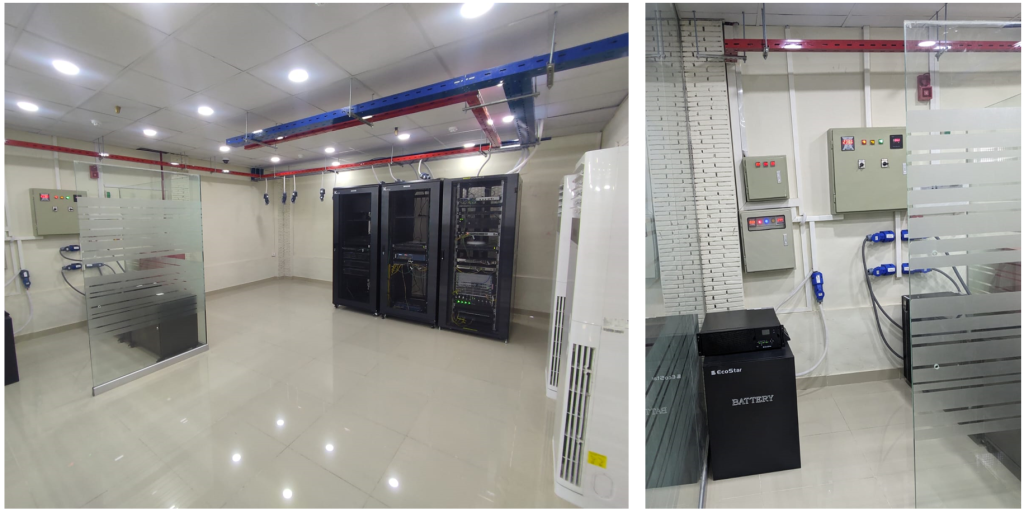
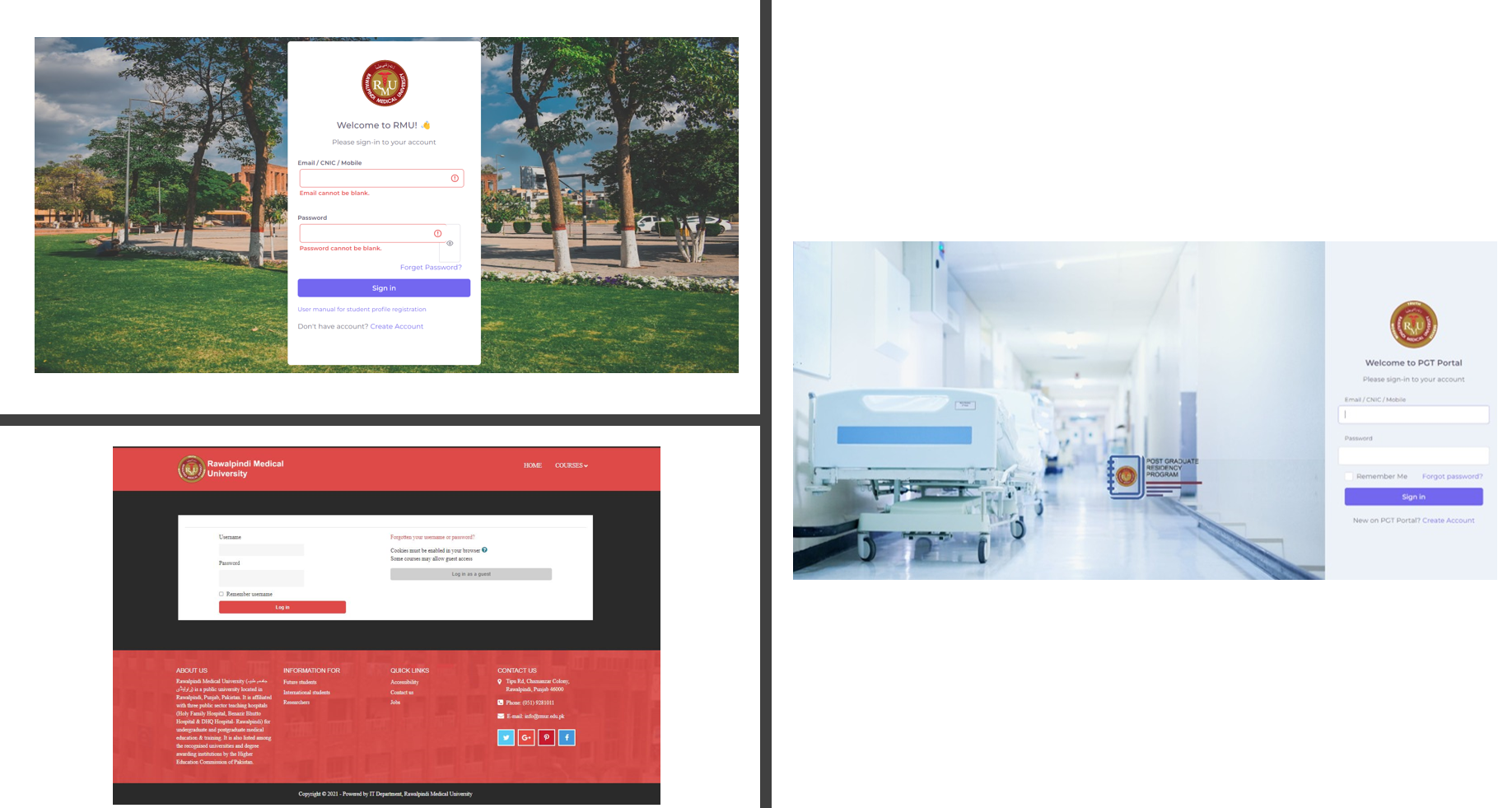
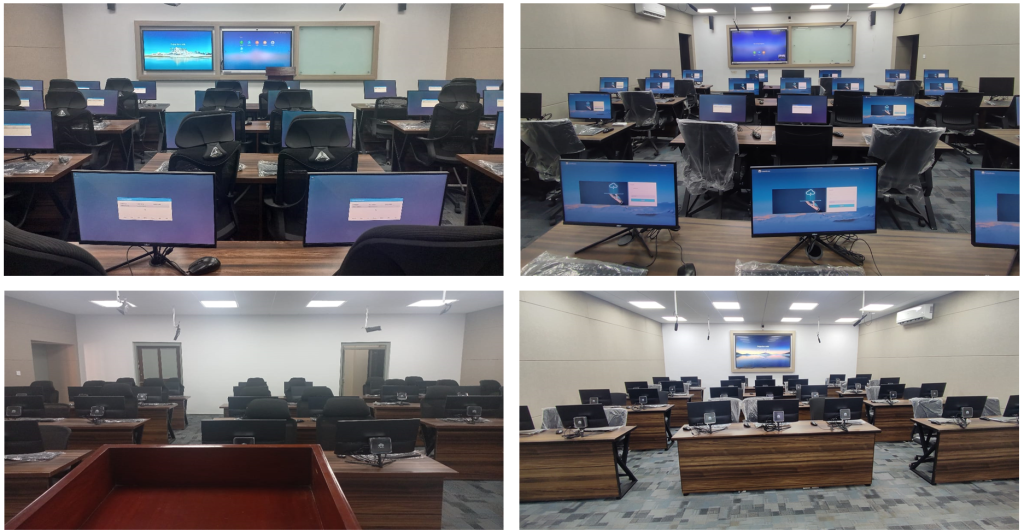
Campuses
Punjab is the most populous province of the country with an estimated population of 101.4 million, and an area of 205,344 km2. It is the most literate provinces of Pakistan, with literacy rate reaching to 61% and 40% urbanization trend, stressing the importance of having quality educational institutions to cater to the needs of ever-increasing population.
Rawalpindi Medical University was established as Rawalpindi Medical College in 1974 and is one of the most renowned medical colleges, actively involved in the teaching of undergraduate MBBS students, and training and clinical teaching of M.Phil, M.S, M.D, FCPS & MCPS post-graduate trainees in 26 disciplines.
More than 12,000 students have graduated from the college to date. These include more than 600 foreign nationals. There are about 1500 Rawalians working in UK, USA, Australia and Gulf countries.
Students of Rawalpindi Medical University have not only been excellent academically but have also made us proud in extracurricular activities. We have a multitude of excellent athletes, debaters, poets, writers, and artists who have brought honor to the college by winning medals, colours and trophies.
There are three tertiary care hospitals attached to the Rawalpindi Medical University for clinical training namely Holy Family Hospital, Benazir Bhutto Hospital & District Headquarter Hospital with total bed strength of 3000. The hospitals prepare professionals equipped to deliver the highest quality of health care services. We have produced some of the country’s best medical graduates who have earned a name around the globe, not only for themselves but for their alma mater as well.
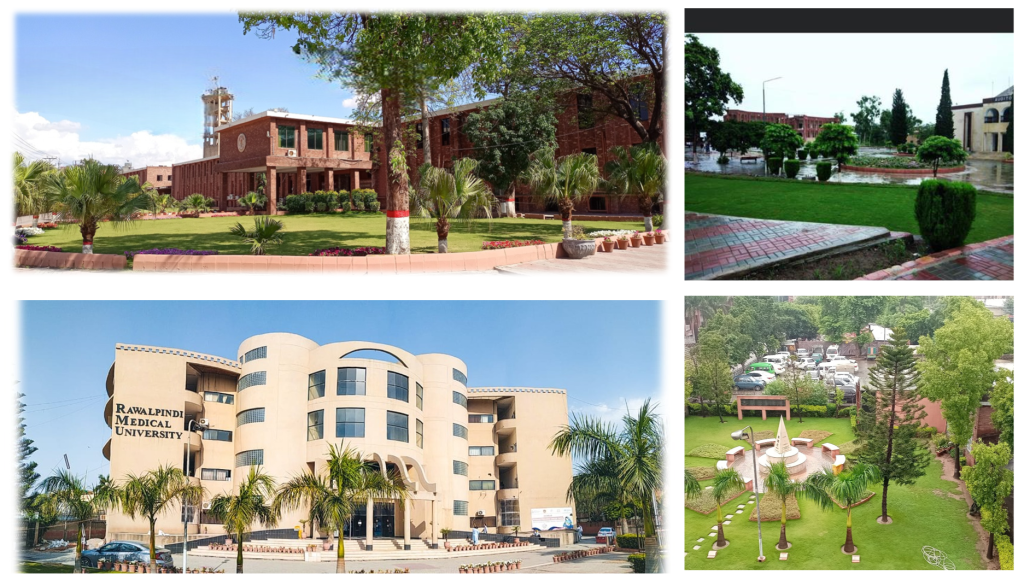

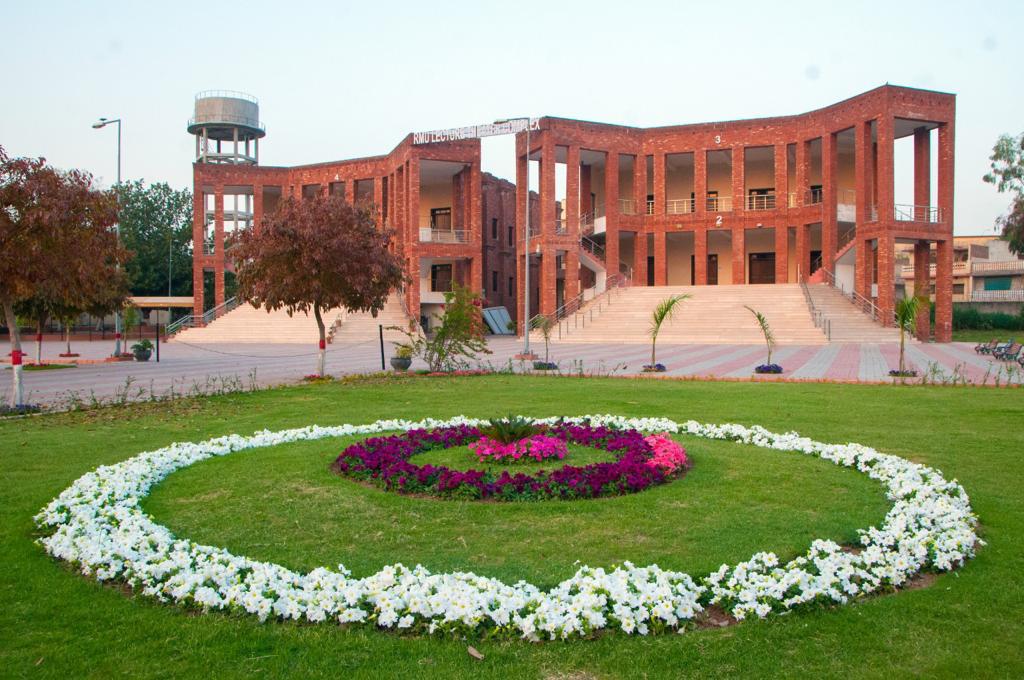
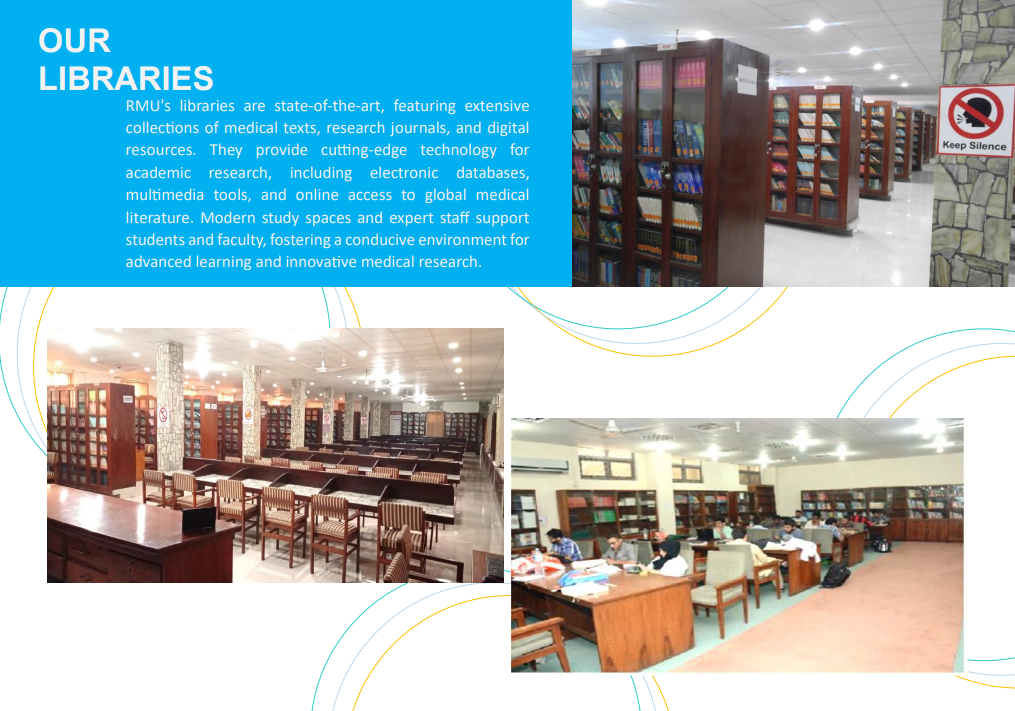

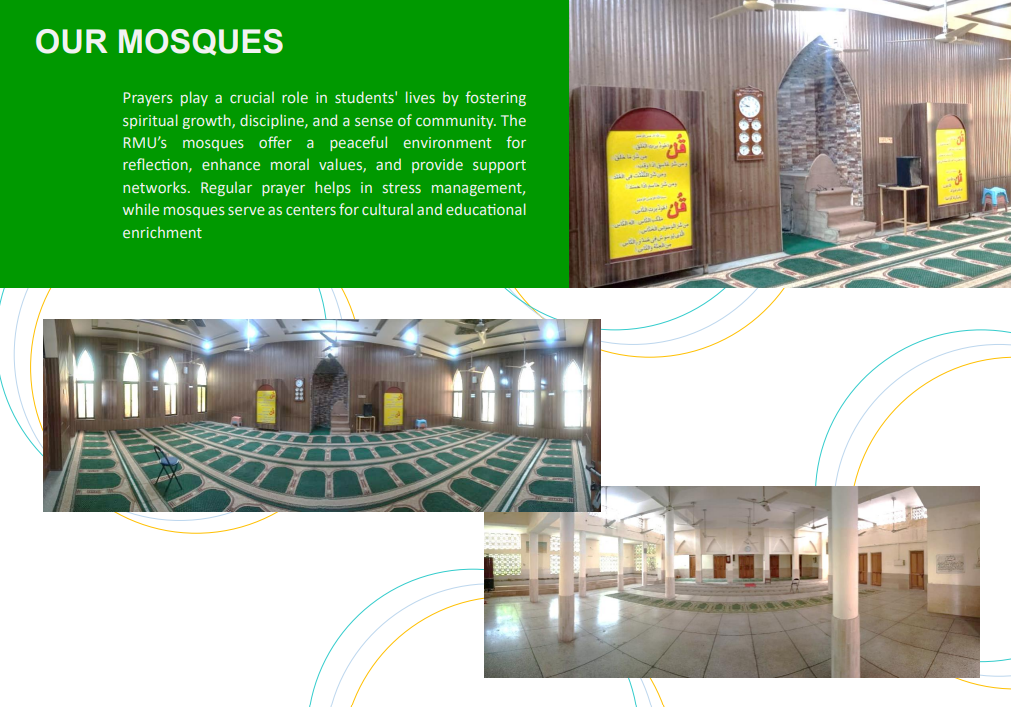
Future Vision
